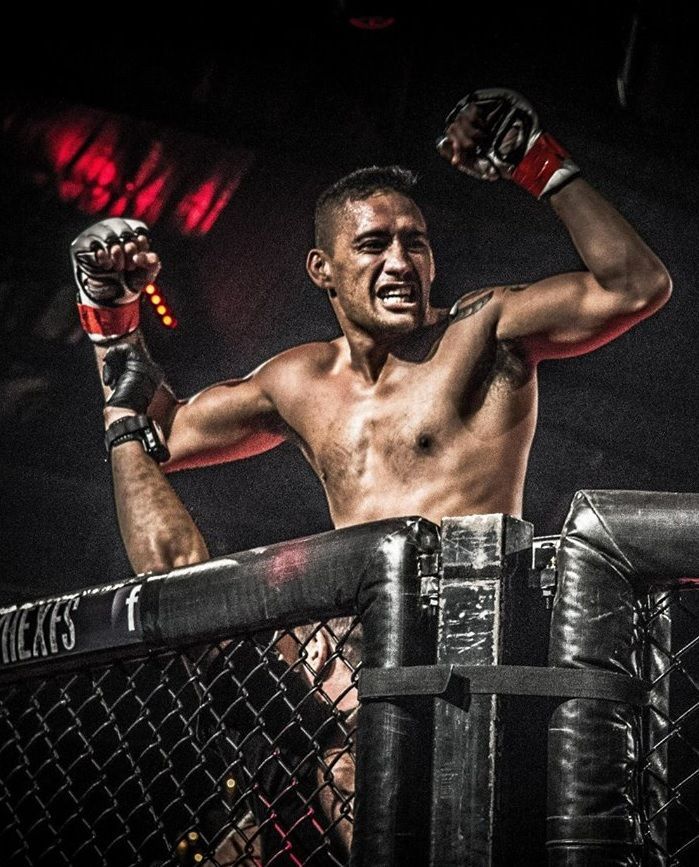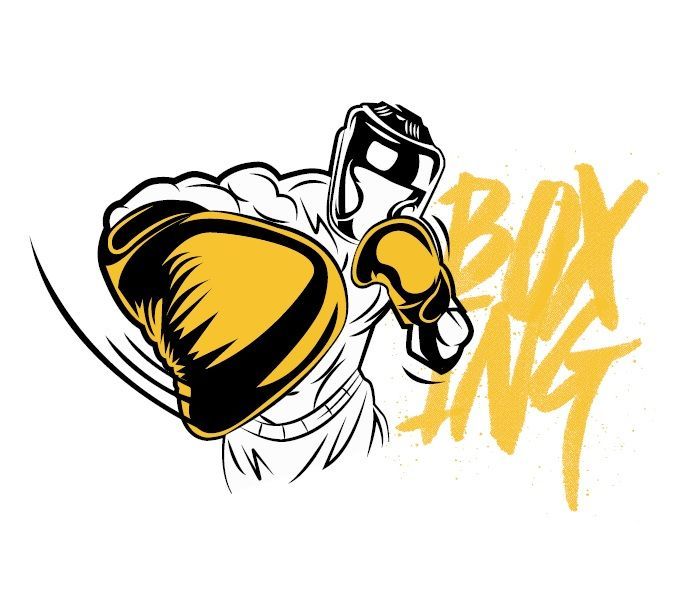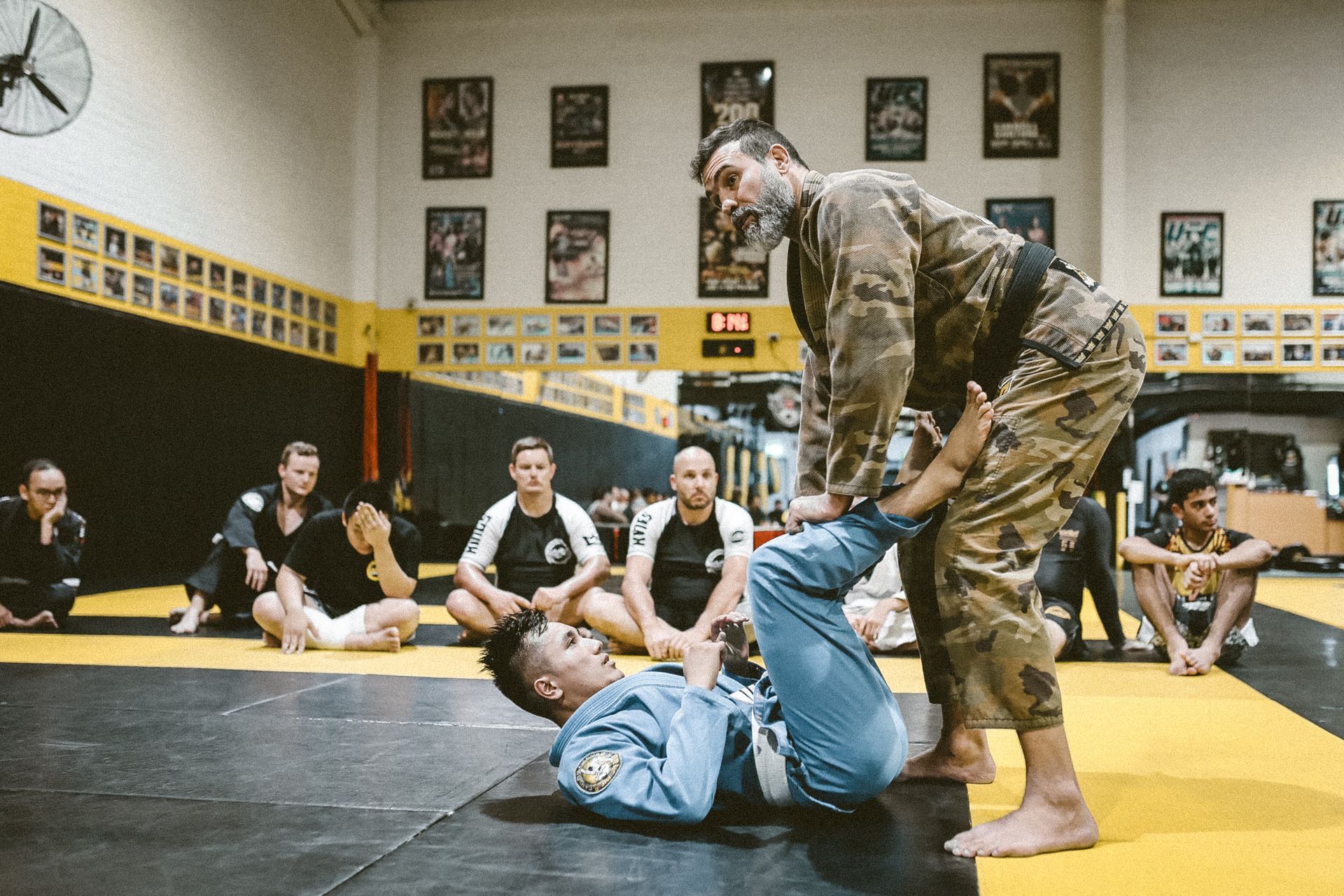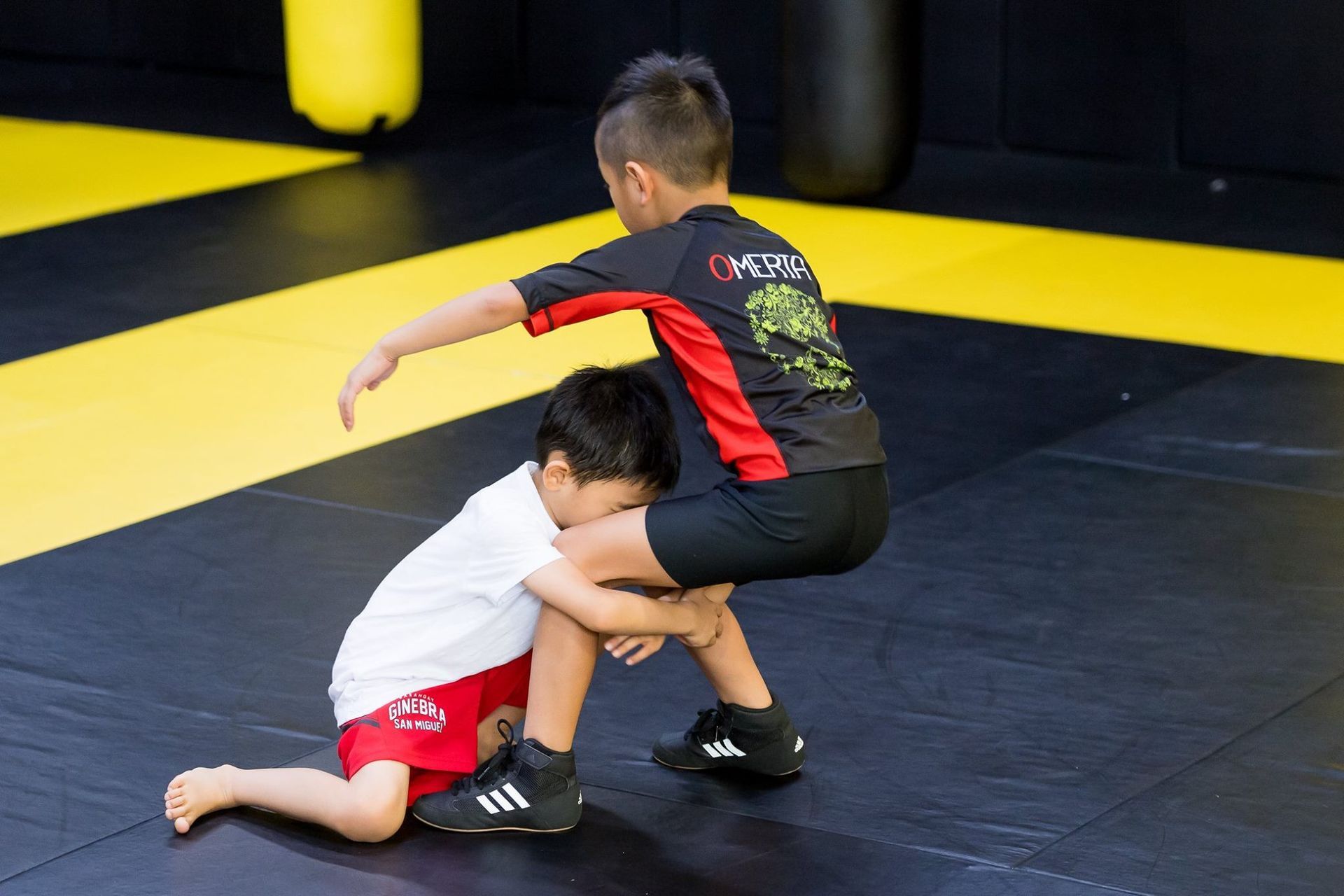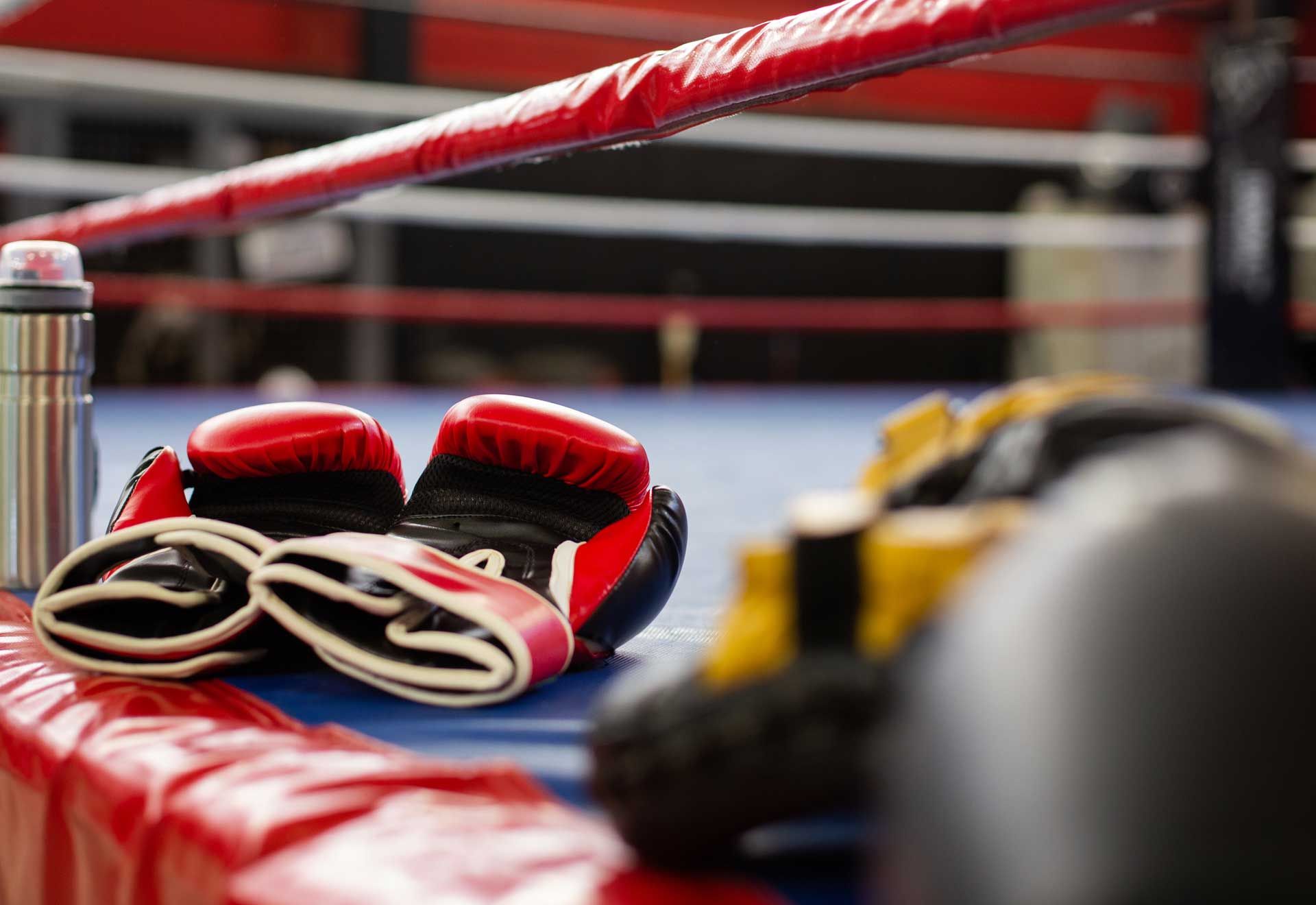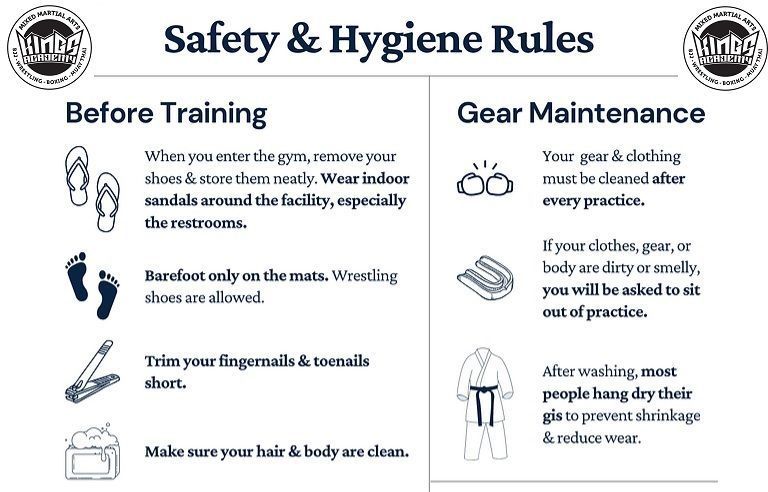Leg Locks – Why are they so popular
Why should you learn about leg locks and add them to your grappling arsenal if you're doing Brazilian Jiu Jitsu (BJJ)? Learn everything you need to know to get started with Leg Locks.
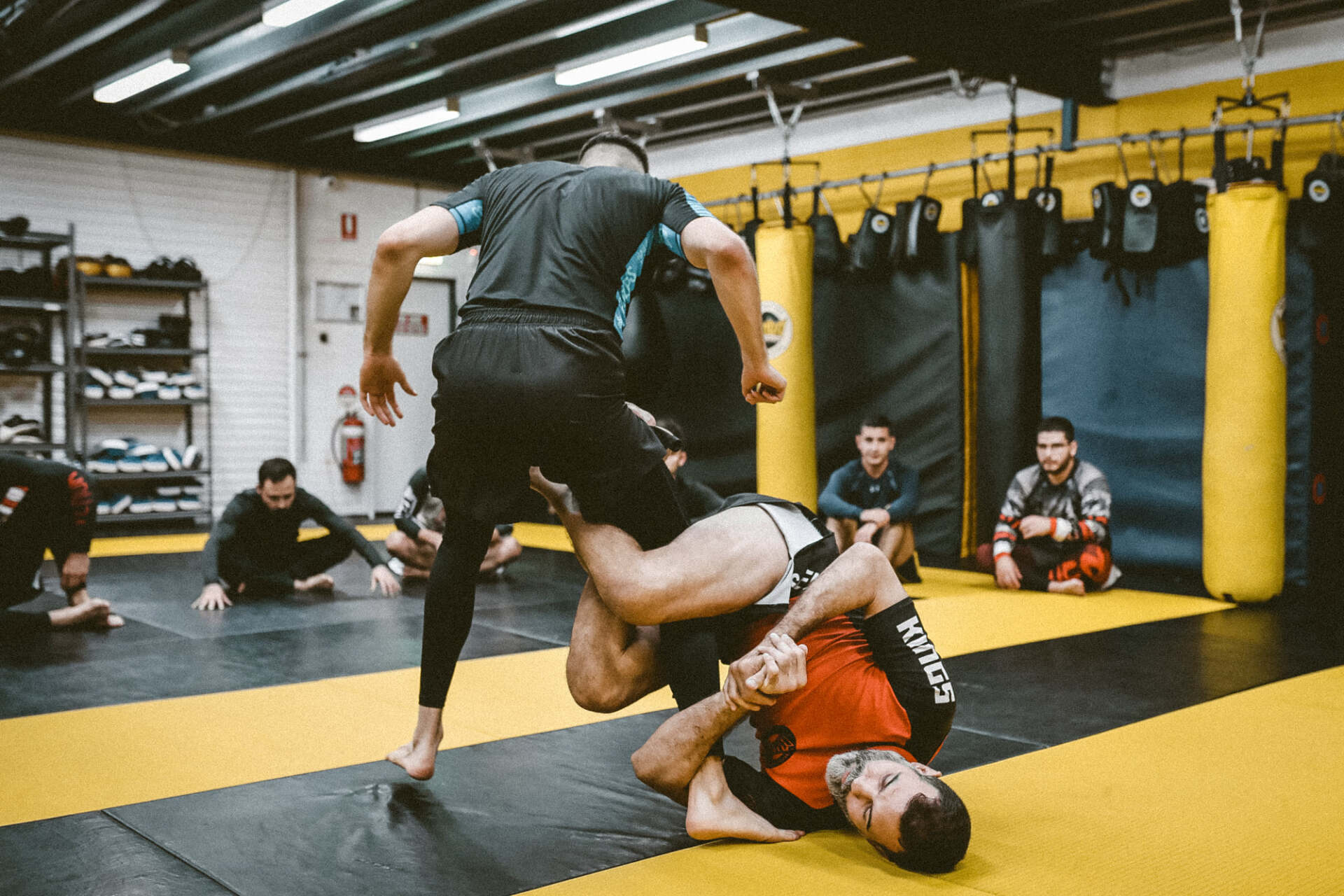
Leg Locks – Why are they so popular
Why should you learn about leg locks and add them to your grappling arsenal?
If you’re interested in finding out more about Kings Academy BJJ program, check out our BJJ Page.
Leg locks are a Grappling (BJJ/Sambo/Catch Wrestling/etc) submission technique that, if performed properly, put your opponent’s leg joints and/or muscles under tremendous strain leading to your partner tapping out to avoid injury. Even though these techniques are highly effective there used to be a time when they weren’t held in high regard, even in high-level Brazilian Jiu Jitsu (BJJ) Academies. Thankfully, times have changed, and leg locks are now an integral part of BJJ study. There are even schools whose primary focus is leg lock submissions. Since you’re reading this article, it means that you have heard of the powerful potential of leg locks and you want to learn a bit more about them, or you are at least interested in learning something about them because you’re unfamiliar. So, if you want to learn a bit more about leg locks, read on…
The Rising Popularity of Leg Locks
With the help of the work of the leg lock pioneers in BJJ, the leg locks are taking their rightful place in the BJJ arsenal. Dean Lister, Erik Paulson, Imanari Masakatsu, and John Danaher – these are the leading minds in the field of BJJ leg locks that helped get the techniques to where they are today. It should be surprising that leg locks were considered unworthy by many grapplers not that long ago. If used properly, they can be positively devastating.
You will see that the leg locks steadily enter the curricula of BJJ schools all around the world. You will see that many high-level BJJ matches in high-level BJJ tournaments end with a skilfully executed leg lock. The Danaher Death Squad immediately springs to mind (now known as New Wave Jiu Jitsu). This is a small group of leg lock specialists that worked under the guidance of John Danaher who developed such athletes as Eddie Cummins, Garry Tonon, Nicky Ryan and Gordan Ryan to name a few. They are experts in performing various leg lock combinations used to win matches decisively. How did Danaher decide to add such detailed focus on leg locks? John was asked a question that changed the entire course of his BJJ and coaching career. "Why would you ignore 50% of the human body?" -Dean Lister
The Evolution of Leg Locks
Upper body submissions of Brazilian Jiu-Jitsu were always based on the notion of positional control. Meaning, submissions were based on the position you were in, where you would have to stabilise yourself first before executing the submission. Leg locks, on the other hand, were seen as spontaneous attacks with far less emphasis on control than what you saw on the upper body. This resulted in leg locks being an unsustainable form of attack, it was either hit or miss.
Leg and hip control became the centre of the modern leg lock strategy, a different form of positional control. Gradually the leg locking system evolved linking attacks and positions into a system based around Leg and hip control referred to as Ashi Garami (Leg Entanglement). There are several variations of Ashi Garami because the mechanism of control is to lock your body to your opponent’s hips and legs to create positional control of the legs. Once the hips and legs are controlled, you can maintain the position and attack with numerous leg locks over time.
Saying that, there are a number of different leg locks that you can execute in a match or in sparring. Here are the five most popular types of leg locks that you should learn and add to your arsenal.
5 Basic Leg Locks
Straight-foot lock
The straight-foot lock is a classic in the field of leg locks. It’s also known as the ankle lock or the foot lock. You execute the technique by grabbing your opponent’s leg and shoving his foot under your armpit. You put your outside foot on his hips and your inside foot under his thigh. Then put your outside forearm underneath his ankle and you grab your hand with your other hand. You squeeze and your opponent taps out. It’s that simple. This move is legal in most, if not all, high-level BJJ organizations that hold tournaments. The damage mostly occurs on the ligaments/tendons of the foot but under extreme pressure bones in the foot will snap.
Heel-hook
We have started the list with a classic move that is held in high esteem and is condoned for use in most BJJ organizations and schools. The heel-hook, however, isn't always held in high esteem due to it's destructive potential. Sure, nobody can deny its devastating effectiveness. In fact, if you perform the heel-hook to the bitter end, then your opponent will get multiple fractures along his leg, ligaments and tendons torn (LCL, PCL, PCL and ACL to name a few). They will be crippled if they don't tap. And this is why you should be very careful when doing this move. You can do the inside heel-hook from the 50/50 guard, 4/11, inside senkaku and far hip ashi to name a few positions. All you need to do is take your opponent’s leg and then put your elbow under his heel. Grab your hand with your other hand and twist his heel. Tap out.
Kneebar
Many of the leg locks can injure your opponent if they are done to the end. The kneebar is no exception to this. This technique works by overextending your opponent’s leg at the knee joint. Typically, the knee is strong enough to withstand a moderate amount of pressure. But if you overdo it – then it may very well snap in half not only tearing the ligaments and tendons in the knee but also tearing the hamstring, a very painful result. Again – you need to watch out when doing this move. You do this move by putting your opponent’s knee between your hips. You do a rear naked choke on his foot and you pull it towards you. Tap out.
Toehold
The toehold can ruin your opponent’s foot if brought to the end. His knee will also be in trouble. A great way to do this move would be from the knee shield position. All you need to do is rotate a and grab your opponent’s foot at the fingers. You slide your other arm underneath the foot and grab your forearm – much like you would do for a Kimura lock. And then you shove his foot towards your opponent’s butt for maximum leverage. Beware – this move can be dangerous as well and can tear the ligaments and tendons in the knee and like the straight foot lock, if applied with enough force can also break bones in the foot.
Calf Slicer
There are certain opponent’s that will never tap out to a calf slicer. This may be due to the fact that their calves are strong like steel or the technique is not being applied properly. When performed poorly this is a pain move, when performed correctly it is a damaging submission. You can do a triangle on your opponent’s upper hip with your legs. Then you need to place your forearm below his knee joint, at the weakest upper point of his calf. You use force to generate pressure and put him into a lot of pain. Few people can withstand this and there are instances where the entire calf muscle tears apart under the force of this submission but when performed correctly this move becomes a knee separation pulling the lower and upper parts of the leg apart until the knee tears under the pressure popping the tendons ligaments in the knee (such as the PCL and ACL).
Improving your Leg Lock Knowledge
We recommend you start drilling the 5 basic types of leg locks no matter who you are. Just make sure that you’re careful with their application in BJJ. You wouldn’t want to cripple someone while training. Granted, it’s your opponent’s responsibility to tap, but you will see that some people don’t really care (or know) about the devastating leg locks they are captured with. In this case, the smartest thing to do would be to make a note in your mind that you have finished the move without actually breaking– and to let your opponent go. By learning the 5 most popular leg lock types you will shoot your BJJ skills through the roof. When it comes to competition it’s never our goal to injure your opponent, but it’s the opponent’s responsibility to know when they’re in danger and tap to avoid injury.
Since Danaher brought Leglocks to the forefront of Brazilian Jiu Jitsu in modern times, lets look at how he views them:
Leg Lock Philosophy
While most people see (or at least saw) leglocks as quick fixes, Danaher saw them as dominant control positions when faced with the question of why would you ignore 50% of the body. Even more, he values them as systems that give birth to subsystems spreading in multiple directions. Once again, Danaher’s problem-solving ability come to the surface.
The system is based on total control of an opponent’s lower body extremity by using your whole body against it. Danaher’s understanding of biomechanics resulted in the most efficient leg locking system in grappling. Contrary to the popular “position before submission” Danaher preaches “control that leads to submission”. To elaborate, he doesn’t want to pin the opponent but control them until he decides to submit. In this scenario, the opponent only has room to move in certain directions. This is where the system is different from other instructionals.
By directing the opponent’s movements into highly restrictive paths, Danaher’s system uses a simple progression of progressively more dominant leglocks positions. Danaher likes to use the Japanese term Ashi Garami for his positions, which translates to “leg entanglement”. The basic philosophy is entering into an Ashi Garami variations and controlling the opponent while guiding them through the hierarchy of positions. Each position is more restrictive than the previous, ending in a no-escape position that offers the highest percentage leg lock there is – the inside or outside heel hook
Terminology
Here is some leg lock terminology to help you understand what everyone is talking about.
Centre line: Imagine a line from the top of your head, straight down to the floor.
Inside Control: The first essential skill of Danaher’s system is getting to inside control. To clarify, this means having both your legs on the inside of the opponent’s legs.
Outside Control: Outside control is when you push your opponents’ limb (i.e. their arm) from the outside across their centre line, exposing their back.
Scoop Grip: underhook on the leg at the knee. The beauty of scoop gripping is that you can control the upper leg and lower leg of your opponent with just one of your arms. Scoop grips are a great pulling grip.
Knee Line: The knee line is the straight line that joins your two knees together. When playing the heel hook game, you want to keep your opponent’s knee well above and within your knee line.
Straight Ashi Garami: The first of the Ashi Garami families is the straight Ashi Garami. Also called same side control where you are attacking the leg on the same side you have control. The Straight Ashi Garami is the position most people generally associate with leg locks. The Straight Ashi Garami is most well know for use with Straight Ankle locks but is also very effective for Heel Hooks, the favourite leg submission of Danaher.
Cross Ashi Garami: The Cross Ashi Garami is considered the most dangerous of the leg lock entanglements. This is where you take the leg to the opposite side of your body crossing over your centreline. The primary focus of the Cross Ashi Garami is the heel hook submission, though you do have the ability to attack an ankle lock.
50/50 Guard: The 50/50 guard is an extraordinarily strong position as it isolates the leg and creates an opening for an inside heel hook. The Position has also evolved into the 80/20 guard which is more focussed on leg submissions and creates less options for your opponent to counter. The 50/50 guard is a leg-focused guard that aims to lock the opponent in a neutral space (hence the term 50/50). It is characterised by the intertwining or wrapping of the legs, where an athlete’s leg is around the other athletes. The configuration of the legs presents an even set of options to both grapplers. The position involves the competitors to stay seated on the mat, where they can transition to sweeps, back takes, and importantly leglocks.
Reverse Ashi Garami: The Reverse Ashi Garami is traditionally used to attack Toe Holds and Kneebars or used in a transition to either a Straight or Cross Ashi Garami to set up a heel hook submission. The Reverse Ashi Garam is when you looking towards the foot unlike the other Ashi Garami positions where you’re looking at your opponents head.
Breaking Mechanics: Danaher has a very interesting theory of what he calls breaking mechanics. It is the way in which the forces you apply can result in a break of the opponent’s limb. A very crucial component of breaking mechanics is the concept of tension. Danaher likes to create tension throughout the whole limb, in order to facilitate the break. This is arguably the most important part of his leg locking system.
Now that we know some terminology, let’s look at Danaher’s principles of leg locking.
Principles of Leg Locking
1. Double trouble principle – This is the idea that the overwhelming majority of resistance in attacking leg locks will come from the second leg. It would thus be wise to develop skills geared at controlling the second leg while we attack leg locks.
2. Dilemma principle – We would rather create dilemmas for the opponent than singular problems. They must choose between one problem to deal with over another, creating a dilemma. We can have three, four, or more problems that we throw at the opponent in an effort to create an endless cycle of dilemmas, ultimately culminating in our opponent falling into a submission finish.
3. Percentage principle – There are several leg locks. However, 90 percent of the success will come from the inside heel hook and the outside heel hook, making them our highest percentage finishes. Understanding this idea allows us to delegate our time towards investing in the most effective finishes under the duress of an intelligent opponent who knows proper defence.
4. Central Problem principle – For any situation, there’s at least one central problem that motivates the action of both athletes. Understanding and identifying what the central problem in a given scenario is can give us direction in addressing the most pressing matter standing in the way of a submission.
5. Separation principle – There’s a strong distinction between the mechanism of controlling an opponent versus breaking an opponent. An athlete must be wary of separating the two, therefore approaching each objective with its own primary focus. Leglocks are like any other position in jiu-jitsu in that it benefits us to focus on ‘position before submission.’
6. Hierarchy principle – There are various ashi garamis and leg locks that we can employ. Understanding the hierarchy and the priorities we ought to have in our approach make all the difference in terms of achieving success in the long run.
7. Opposing forces principle – This is the idea that whenever we go to control and break our opponent, we always want to create a force of breaking opposite to the force of control. The detail of our leg and grip position will invariably determine or success or failure in this regard.
8. Holistic principle – Most people teach heel hooks as an isolated move. The best way to attack leg locks begins within the framework of a long chain of events, relying on favorable inside positioning of the legs as well as dominant grip. The battle is won or lost far before the breaking of any joints occurs.
9. Multiple ashi garami principle – For almost all of our highly successful attacks, we will employ multiple ashi garami variations to achieve separate tasks. We categorize certain tasks to specific ashi garami configurations, thereby increasing our success in performing those specific tasks.
10. Closed wedges over open wedges principle – All of the favored finishing positions utilize closed wedges over open wedges, creating a strong mechanical advantage that leads to tighter control over the opponent’s movement.
Notable Leg Lockers
Dean Lister - Brazilian Jiu Jitsu (BJJ)
Dean Lister is a pioneer in the leg submission game taking many of his lower body submission cues from the world of sambo and developing them for his leg attack system.
He claimed the gold medal again in 2011 in the under 99 kg division by submitting João Assis in the final by a heel hook. He also submitted jiu-jitsu world champion Rodolfo Vieira, in his weight division, also with a heel hook. At the 2013 ADCC in Beijing, China, Lister defeated Cristiano Lazzarini in the semi-finals of the under 99 kg division by heel hook but would go on to lose on points in the finals to João Assis; In the absolute division Lister submitted both Hideki Sekine and João Gabriel Rocha by heel hook. Dean is one of only 7 people to achieve the ADCC triple crown winning his weight division, absolute division and super fight.
Dean Lister asked John Danaher an important question which changed the way Danaher looked at Leg Locks and set the ball rolling for the emergence of leg locks as a powerful weapon for all grapplers. Dean asked John "Why would you ignore 50% of the human body?". With this question John didn’t learn a technique but an entire philosophy.
Imanari Masakatsu - Mixed Martial Arts (MMA)
Imanari is an MMA fighter who was primarily a grappler and is universally known for his skill and preference for leglocks, which gained him the nickname of "Ashikan Judan" ("The Great Master of Leg Submissions"). Though his striking game is considered inferior, Imanari often engages in stand-up battles in order to bait the opponent to the ground, usually by dropping down after or while seizing control of his leg or by way of ashi garami. He stands out for his dexterity in toehold and heel hook variations and is an avid user of the 50/50 guard in order to transition between submission attempts. He describes his signature leglock style as not based in sambo as it is popularly believed, but "purely self-taught", and explained his preference for it as "because it hurts the opponent".
The "Imanari Roll" (Dropping and rolling from a stand up position into a leglock) is a move named after Imanari due to his development and usage of them in MMA.
Rousimar Palhares - Brazilian Jiu Jitsu (BJJ) and Mixed Martial Arts (MMA)
His nickname Toquinho, Portuguese for "little tree stump", comes from his short, stocky, heavily muscled build. Palhares is an MMA Fighter who is primarily known for his powerful ground game. Of his 16 submission victories 12 have come from leg locks, primarily the heel hook. He is also known for his refusal to release submission holds when either the opposing fighter has submitted or the referee has called a stop to the bout. Rousimar brought the fear of leg locks into modern MMA. His determination to get the leg and tear the knee made him an undesirable opponent.
Ryan Hall
Brazilian - Jiu Jitsu (BJJ) and Mixed Martial Arts (MMA)
A Black Belt under 2-time world champion Felipe Costa and Season 22 Champion of The Ultimate Fighter reality series, Ryan Hall is a professional Mixed Martial Arts fighter. As a member of The Ultimate Fighter 22, a Reality TV series, Ryan won his first two matches with heel hooks in the first round. Once in the UFC One of Hall’s most memorable finishes was against BJ Penn. Hall faced B.J. Penn at UFC 232. He won the fight via a heel hook submission rolling into a backside 50/50 in the first round. Ryan Hall popularised the 50/50 and backside 50/50 position for leg locks.
Aaron “Tex” Johnson - Brazilian Jiu Jitsu (BJJ)
This American grappler uses leglocks to win around 80% of his submissions. He is also an excellent example of a heavyweight fighter with the “small men game.” Thanks to this, he has been able to defeat his opponents in major ADCC tournaments and IBJJF, submission only contests. All this is thanks to the use of straight foot locks and heel hooks. Some of the famous fighters who have found themselves into forced submission with this leglock tactic are Jackson Sousa, Ben Hogkinson, and Felipe Pena.
Eddie “Wolverine” Cummings - Brazilian Jiu Jitsu (BJJ)
While Eddie Cummings is no longer fighting as much, yet he is still remembered for is accurate and technically sound leg attacks. He is among the best featherweight submission athletes and holds a black belt under John Danaher, who now represents Unity Jiu-Jitsu. His martial arts skills helped him win the ADCC vet, Polaris Superfight, as well as be an EBI champ twice. With approximately 70% of his submissions being leglocks, Cummings is undoubtedly among the dreaded leglock practitioners and considered one of the most technical leg lockers around.
Garry Tonon - Brazilian Jiu Jitsu (BJJ) and Mixed Martial Arts (MMA)
This fighter has proved to be superb leg locker in both MMA and grappling. The brave Garry Tonon employs different leglocks, even at the highest levels. This has seen this tenacious fighter also exchange leg attacks with Rousimar Palhares. Risking everything to execute the leglock has seen Tonon succeed, winning the ADCC bronze medal and many triumphs at submission-only and MMA contests.
Elvis Sinosic -
Brazilian Jiu Jitsu (BJJ) and Mixed Martial Arts (MMA)
Elvis Sinosic was a BJJ Competitor and MMA Fighter. He is an Australian Pioneer of BJJ and MMA for Australia. Elvis was the first Australian to compete in ADCC at the Inaugural ADCC World Championships in 1998. Elvis was also the first Athlete in ADCC History to win by Heel Hook Submission. Years later the Heel Hook would be considered one of the most important submissions to know, both to attack and defend against in ADCC competition.
Craig Jones - Brazilian Jiu Jitsu (BJJ)
This fighter has lately been on the limelight for his dominant use of leglocks on different opponents, which has brought him lots of success. In 2019, this grappler from Australia reached the ADCC final and emerged the victor in several submission-only fights using his persistent leg attacks. He has been able to bring into submission famous figures, with over 50% of his submissions being lower body ones using toe holds, Caio Terra foot locks, kneebars, and heel hooks.
Barely a week has passed since he broke the leg of Vinny Maghalaes, who was of the view that leglocks do not work.
Lachlan Giles - Brazilian Jiu Jitsu (BJJ)
This Australian-born grappler is the undoubted one of the best leg lockers today. Although he only won the bronze medal during the ADCC competition in 2019, he is possibly the greatest winner in that tournament. This is because he brought three heavyweight fighters, Kaynan Duarte, Patrick Gaudio, and Mahammed Aly, into submission, all this in a single day. This was met with much applause from the fascinated and much-entertained crowd due to David vs Goliath contests.
Despite being outweighed by his opponents by over 20 kilograms. This proved that smaller competitors could also defeat massive fighters if they use the appropriate technique. After his incredible success, he now enjoys superstar status and has gone on to do seminars across the globe and sell many DVD instructional videos. Additionally, his experience in 50/50 defence and attacks provides a great deal of insight. He even managed to back away leg entanglements when fighting Gordon Ryan at the ADCC.
Gordon Ryan - Brazilian Jiu Jitsu (BJJ)
Gordon Ryan is an American submission grappler and Brazilian jiu-jitsu black belt, considered to be the greatest NoGi grappler of all time due to his accomplishments and dominance. Ryan is a five–time ADCC World champion and two-time IBJJF No-Gi World as well as numerous other Submission Grappling accolades and titles. Gordon is the only Athlete to have won 3 weight divisions (88kg, 99kg & 99+kg) as well as the Superfight and only athlete to have won a weight division and Superfight in the same year. Using an exquisite cross ashi garami entry, this competitor managed to emerge victorious against top-level opponents thanks to his heel hooks and kneebars. The use of leglocks helped him achieve around 30% of submissions. Furthermore, he used leglocks to get the finish but also start a scramble or set up sweeps and then reach the back.
Conclusion
Now you have a good insight into why leg locks have become so popular and good understanding of how they work it’s time to get on the mat and practice them. Find a good high level BJJ coach who understands the Leg Entanglement system and pay attention. If you haven’t already go get a Flo Grappling account and watch some amazing Athletes in action.
If you’re interested in finding out more about Kings Academy BJJ program, check out our BJJ Page.
If you’re interested in doing Brazilian Jiu Jitsu at Kings Academy you can contact us here: Contact Us
Or you can book a week free trial here: Week Free Trial
If you found this article helpful and interesting, you can check out:
Why your child should train in BJJ
Ten reasons to exercise reguarlarly
Kings Academy of Martial Arts is the premier Brazilian Jiu Jitsu Academy Servicing Great Western Sydney with classes in BJJ (Brazilian Jiu Jitsu), Muay Thai, Boxing, Wrestling and MMA (Mixed Martial Arts)





